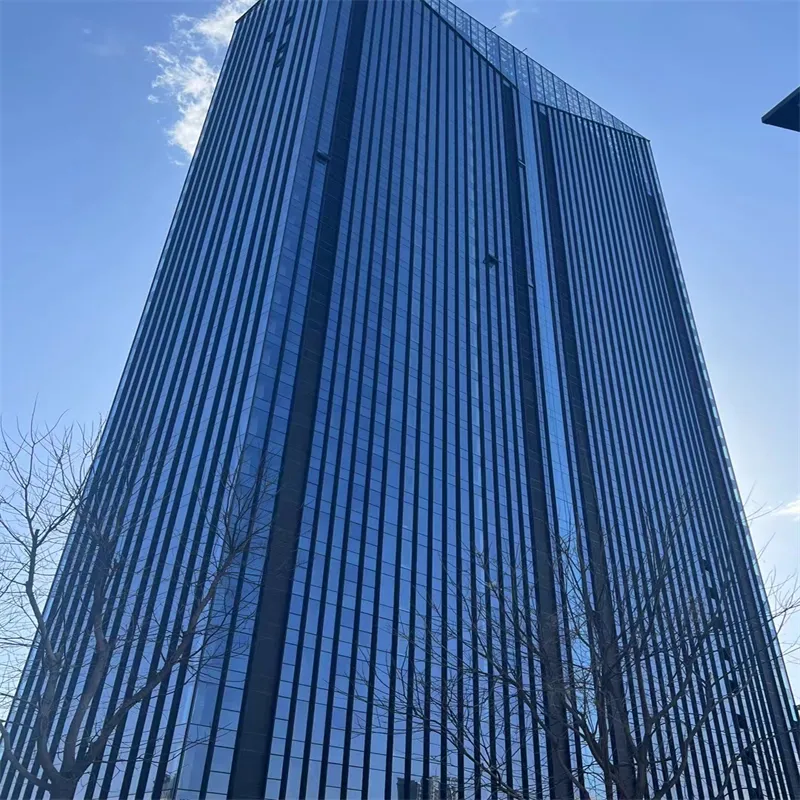Dec . 04, 2024 09:44 Back to list
cutting laminated safety glass
Understanding Cutting Laminated Safety Glass Process, Benefits, and Applications
Laminated safety glass has become a crucial component in various industries, particularly in construction, automotive, and security sectors. Its unique properties not only enhance safety but also improve aesthetic appeal. One critical aspect of working with laminated safety glass is the cutting process. This article will delve into the methods, advantages, and applications of cutting laminated safety glass, thereby providing a comprehensive understanding of this essential material.
What is Laminated Safety Glass?
Laminated safety glass is composed of two or more layers of glass that are bonded together by an interlayer, usually made of polyvinyl butyral (PVB) or ethylene-vinyl acetate (EVA). This interlayer holds the layers of glass together even when shattered, significantly reducing the risk of injury from sharp shards. The glass remains intact, which prevents glass fragments from scattering and provides an essential safety feature in various applications.
The Cutting Process
Cutting laminated safety glass is a specialized process due to its composite structure. The cutting must be performed in a way that maintains the integrity of the glass while ensuring accurate dimensions. There are several methods employed in the cutting process
1. Score and Snap Method This traditional method involves scoring the glass surface with a glass cutter and then applying pressure to snap it along the scored line. However, this method is best suited for monolithic glass rather than laminated glass due to the adhesive properties of the interlayer.
2. Waterjet Cutting This technique utilizes a high-pressure stream of water mixed with abrasive materials to cut the glass. Waterjet cutting is particularly effective for laminated glass, as it minimizes stress and heat, reducing the risk of delamination and maintaining the clarity of the glass.
3. Laser Cutting Laser cutting technology has advanced significantly and is now a preferred method for cutting laminated safety glass. This process uses a focused beam of light to create precise cuts. Laser cutting can accommodate intricate designs and complex shapes while ensuring a clean cut without affecting the structural integrity of the glass.
4. CNC Cutting Computer Numerical Control (CNC) machines use programmed software to guide cutting tools through the glass. This method offers high precision and can efficiently handle repetitive tasks, making it ideal for mass production.
Benefits of Cutting Laminated Safety Glass
The ability to effectively cut laminated safety glass brings numerous benefits
cutting laminated safety glass

- Safety Proper cutting techniques ensure that the laminated glass retains its safety features
. The interlayer remains intact, providing its protective qualities even after cutting.- Versatility Laminated safety glass can be manufactured in various thicknesses and sizes. Advanced cutting techniques allow it to be customized for different applications, enhancing its versatility.
- Aesthetic Options Cutting laminated glass enables designers and architects to create unique shapes and patterns, thereby enhancing the aesthetic appeal of structures and products.
- Durability Laminated glass is known for its impact resistance and durability. Proper cutting methods help maintain these characteristics, ensuring the glass performs well under various conditions.
Applications of Laminated Safety Glass
Laminated safety glass is utilized in various applications, including
- Architecture Used in building facades, skylights, and glass staircases, laminated glass enhances safety without compromising design.
- Automotive Windshields and side windows often employ laminated safety glass to provide superior protection for vehicle occupants.
- Security Bank teller windows, display cases, and security barriers frequently use laminated glass to deter break-ins while maintaining visibility.
- Consumer Products Items such as shower doors and glass furnishings also benefit from laminated glass, offering both safety and stylish design.
Conclusion
Cutting laminated safety glass is a sophisticated process that requires careful consideration of both techniques and materials. As the demand for safety and aesthetic appeal in construction and design continues to grow, understanding the intricacies of cutting laminated glass becomes increasingly important. With advancements in cutting technologies, laminated safety glass can be tailored to meet diverse needs while ensuring maximum safety and durability. This makes it an invaluable material in our modern world, enhancing both functionality and design across multiple sectors.
-
Safety and Style with Premium Laminated Glass Solutions
NewsJun.24,2025
-
Reinvents Security with Premium Wired Glass
NewsJun.24,2025
-
Premium Float Glass Line for Modern Architecture
NewsJun.24,2025
-
Low Emissivity Glass for Energy-Efficient Architecture
NewsJun.24,2025
-
High-Performance Insulated Glass Solutions for Modern Architecture
NewsJun.24,2025
-
Elevates Interior Style with Premium Silver Mirror
NewsJun.24,2025
Related PRODUCTS














